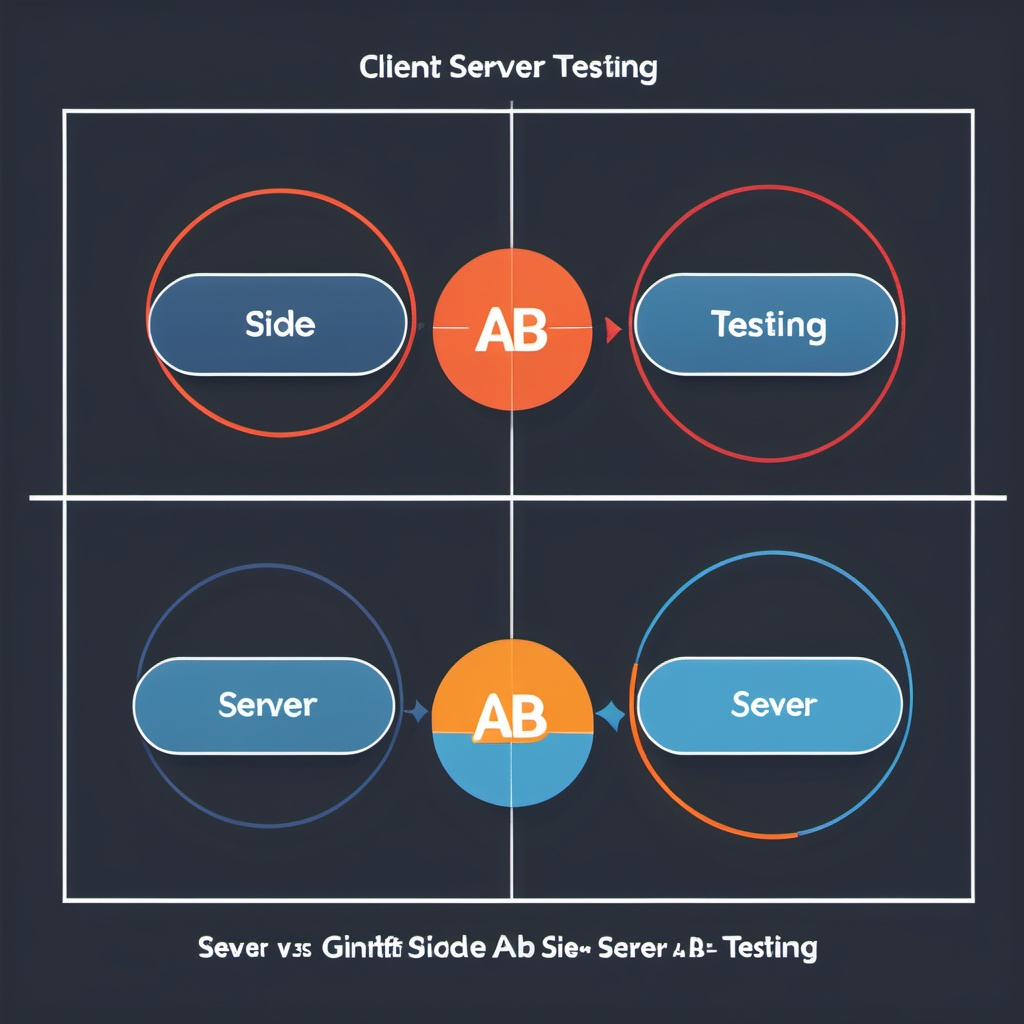Client-Side vs. Server-Side A/B Testing: Which Approach Reigns Supreme?
In the ever-evolving landscape of online optimization, A/B testing stands as a cornerstone for data-driven decision-making. By allowing marketers and developers to compare different versions of a webpage or app, A/B testing provides concrete insights into what resonates with users and drives conversions. However, the method of implementation – client-side or server-side – significantly impacts the testing process and its results. This article delves into the intricacies of both approaches, exploring their benefits, drawbacks, and ultimately arguing why server-side testing represents the future of optimization.
What is Client-Side A/B Testing?
Client-side A/B testing operates within the user’s browser. When a visitor lands on a webpage, a snippet of JavaScript code, typically provided by a third-party testing tool, executes. This code dynamically alters the page content based on the assigned variant. For example, it might swap out headlines, change button colors, or rearrange elements. The chosen variant is displayed to the user, and their interactions are tracked to measure the performance of each version.
Benefits of Client-Side A/B Testing:
- Ease of Implementation: Client-side testing is generally easier to set up, especially for marketers without extensive development experience. Many platforms offer user-friendly interfaces and visual editors, allowing for quick creation and deployment of tests.
- Faster Setup: Because changes are implemented on the client-side, the testing process can often be initiated more rapidly. There’s no need to wait for server-side deployments, allowing for quicker iteration and learning.
- Lower Initial Cost: Client-side testing tools often come with lower entry-level pricing plans, making them attractive for smaller businesses or those just starting with A/B testing.
Drawbacks of Client-Side A/B Testing:
- Flicker Effect: One of the most significant drawbacks is the potential for “flicker” or “flash of original content.” The user may briefly see the original version of the page before the JavaScript code executes and displays the variant. This can create a jarring and unprofessional user experience, negatively impacting brand perception.
- Limited Testing Scope: Client-side testing is primarily restricted to front-end changes. It’s difficult to test changes that require server-side logic, such as pricing algorithms, product recommendations, or complex user flows.
- Accuracy Concerns: Because the test relies on client-side execution, factors like slow internet connections, browser compatibility issues, or disabled JavaScript can affect the accuracy of the results. This can lead to skewed data and unreliable conclusions.
- Performance Impact: The extra JavaScript code required for client-side testing can add to page load time, potentially impacting overall site performance and user experience. This can be especially problematic on mobile devices.
- Security Risks: Implementing third-party JavaScript code introduces potential security vulnerabilities. If the testing tool is compromised, it could expose sensitive user data.
What is Server-Side A/B Testing?
Server-side A/B testing takes place on the server before the page is even sent to the user’s browser. When a user requests a page, the server determines which variant to display based on the assigned segment. The chosen variant is then rendered and delivered to the user, ensuring a seamless and consistent experience.
Benefits of Server-Side A/B Testing:
- Eliminates Flicker: Since the variant is rendered on the server, there’s no flicker effect. The user sees the chosen version immediately, creating a smooth and professional experience.
- Expanded Testing Capabilities: Server-side testing allows for testing of virtually any element, including back-end logic, pricing changes, product recommendations, and complex user flows. This opens up a much wider range of optimization possibilities.
- Improved Accuracy: Server-side testing is less susceptible to external factors like browser compatibility or internet connection issues, leading to more accurate and reliable results.
- Enhanced Performance: Because the variant is rendered on the server, there’s no additional JavaScript code required on the client-side, minimizing the impact on page load time and improving overall performance.
- Increased Security: Server-side testing reduces the reliance on third-party JavaScript code, minimizing potential security risks.
- Personalization Opportunities: Server-side testing can be easily integrated with personalization platforms, enabling highly targeted and personalized experiences for individual users.
Drawbacks of Server-Side A/B Testing:
- Increased Development Effort: Server-side testing typically requires more development expertise to implement. Changes often need to be deployed through the development pipeline, which can be more time-consuming.
- Longer Setup Time: The setup process for server-side tests can be longer compared to client-side testing, especially for complex changes.
- Higher Initial Cost: Server-side testing tools and platforms often come with higher price tags, making them less accessible for smaller businesses with limited budgets.
Why Server-Side Testing is the Future:
While client-side testing offers a quick and easy entry point to A/B testing, its limitations become increasingly apparent as optimization efforts mature. The flicker effect, limited testing scope, and accuracy concerns inherent in client-side testing can hinder progress and lead to unreliable conclusions.
Server-side testing, on the other hand, provides a robust and scalable solution for advanced optimization. By eliminating flicker, expanding testing capabilities, improving accuracy, and enhancing performance, server-side testing empowers businesses to unlock the full potential of A/B testing. The ability to test back-end logic and integrate with personalization platforms allows for highly targeted and data-driven optimization strategies.
Although server-side testing requires a higher initial investment in terms of development effort and cost, the long-term benefits far outweigh the initial hurdles. As businesses increasingly rely on data-driven decision-making and personalized experiences, server-side testing will become the de facto standard for A/B testing.
Conclusion:
The choice between client-side and server-side A/B testing depends on the specific needs and resources of the organization. For simple front-end changes and businesses just starting with A/B testing, client-side testing may be a suitable starting point. However, for businesses serious about optimization and looking to achieve significant growth, server-side testing is the clear winner. Its ability to eliminate flicker, expand testing capabilities, improve accuracy, and enhance performance makes it the superior choice for driving meaningful results. As technology evolves and the demand for personalized experiences grows, server-side testing represents the future of A/B testing and online optimization. Embracing this approach is crucial for businesses looking to stay ahead of the curve and maximize their online potential.


